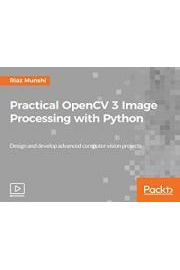Practical OpenCV 3 Image Processing with Python is an instructional television series that is designed to teach viewers the basics of computer vision and image processing using the popular programming language, Python, and the OpenCV 3 library.
In the third episode of the show's first season, entitled "Stretch, Shrink, Warp, and Rotate Using OpenCV 3," viewers are introduced to some of the basic image manipulation techniques that are possible with OpenCV 3 and Python.
The episode begins with an explanation of how to load an image into Python and how to manipulate it using the OpenCV 3 library. Viewers are shown how to use the cv2.imread() function to load an image, and then how to use cv2.imshow() to display the image in a window.
From there, the episode delves into the first image manipulation technique – stretching an image. Viewers are shown how to use the cv2.resize() function to stretch an image by specifying the desired width and height of the output image. The episode also covers how to stretch an image along only the x or y axis using the cv2.resize() function.
Next, the episode covers shrinking an image. Viewers are shown how to use the cv2.resize() function to shrink an image by specifying the desired width and height of the output image. The episode also covers how to shrink an image along only the x or y axis using the cv2.resize() function.
After covering stretching and shrinking, the episode moves on to warping an image. Viewers are shown how to use the cv2.warpAffine() function to apply an affine transformation to an image. The episode explains what an affine transformation is and how it can be used to warp an image. Viewers are also shown how to create a transformation matrix using the cv2.getAffineTransform() function.
Finally, the episode covers rotating an image. Viewers are shown how to use the cv2.getRotationMatrix2D() function to create a rotation matrix, and then how to use the cv2.warpAffine() function to apply the rotation matrix to an image. The episode also covers how to specify the rotation angle and the point about which the image should be rotated.
Throughout the episode, viewers are given code snippets and examples that they can use to follow along and try the techniques for themselves. The episode also includes helpful graphics and animations to reinforce the concepts being discussed.
At the end of the episode, viewers are presented with a challenge to put their newfound knowledge to the test. The challenge provides an image and asks viewers to stretch, shrink, warp, and rotate the image using the techniques covered in the episode.
Overall, "Stretch, Shrink, Warp, and Rotate Using OpenCV 3" is a comprehensive and engaging episode that gives viewers a solid foundation for further exploring image processing and computer vision with Python and OpenCV 3.
-
Channel
-
First AiredJuly 30, 2017
-
Runtime4 min
-
LanguageEnglish

-
 MyFreeDIRECTV is a new free premium TV experience.
MyFreeDIRECTV is a new free premium TV experience.
-
 Enjoy a curated selection of popular free live channels and On Demand library.
Enjoy a curated selection of popular free live channels and On Demand library.
-
 Try the DIRECTV experience - All you need is the DIRECTV app.
Try the DIRECTV experience - All you need is the DIRECTV app.

 MyFreeDIRECTV is a new free premium TV experience.
MyFreeDIRECTV is a new free premium TV experience.
 Enjoy a curated selection of popular free live channels and On Demand library.
Enjoy a curated selection of popular free live channels and On Demand library.
 Try the DIRECTV experience - All you need is the DIRECTV app.
Try the DIRECTV experience - All you need is the DIRECTV app.